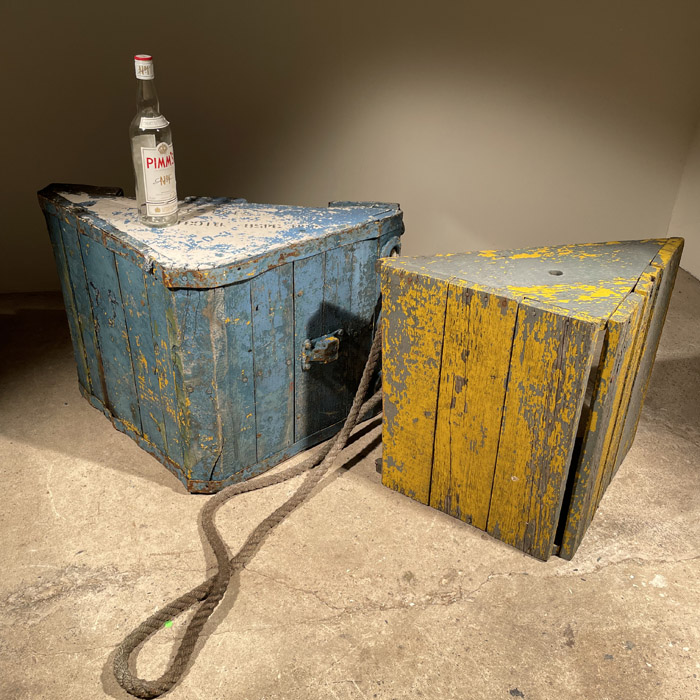No products in the basket.
Two English timber aerodrome chocks,
mid 20th Century , for securing aircraft, salvaged from Brooklands, Surrey
each of plank construction, the larger with stencilled codes and rope for hauling away,
£425 the two
Brooklands is at the heart of the History of British Aviation and Motor sport. This an excerpt from Historic England’s summary of the site.
“…The site was also of great importance in the realm of aviation. In 1907 both Claude Moore Brabazon and Alliott Verdon Roe attempted to fly aeroplanes of their own design at Brooklands without success. On June 8th 1908, however, another attempt by Roe was more successful and he became the first Briton ever to fly a British-designed aeroplane. Thereafter the new aerodrome within the [racing]circuit rapidly became the focal point for the country’s burgeoning aviation industry, including aircraft production, flying training and passenger flights. … In 1909 Britain’s first public flying demonstration was held at the aerodrome and in 1910 Lane’s Flying School opened, followed in 1911 by Vickers’ Flying School. In the same year the first passenger flight ticket was sold at Brooklands by Keith Prowse and Co, … Motor racing ceased at Brooklands in 1939 and at the start of World War II both the airfield and circuit were requisitioned for use by the Vickers and Hawker aircraft companies, most of the Hurricanes that brought victory in the Battle of Britain being built at Brooklands.
Formerly lying immediately outside the track to the east, the Vickers factory was rapidly expanded, with buildings erected across the area of the outer circuit from a point north of the Byfleet Banking bridge to the southern half of the Finishing Straight. In addition wartime hangars were erected on the Members’ Banking, the northern end of the Finishing Straight and the Railway Straight. On 4th September 1940, during the Battle of Britain, the Vickers factory was badly bombed by the Luftwaffe causing severe casualties amongst the workforce. The anti-aircraft guns at Brooklands were in action on 33 occasions from the time of the raid up until May 1941 and shot down two aircraft. Some time between early 1941 and the start of 1942 the defences at Brooklands were further enhanced by the construction of a reinforced concrete tower (Scheduled Ancient Monument) on the Members’ Hill. The tower, split into two parts, mounted a 40mm Bofors gun and its predictor gear and was intended to provide a clear field of fire against low-flying raiders. Additional provision for the protection of the Vickers workforce was made with the construction of brick and concrete lined air raid shelters cut beneath the foot of Members’ Hill.”
After the war Aircraft production continued and the site was to become revered as the home of Concorde.
Who knows what celebrated aircraft these chocks may have held in check?!




